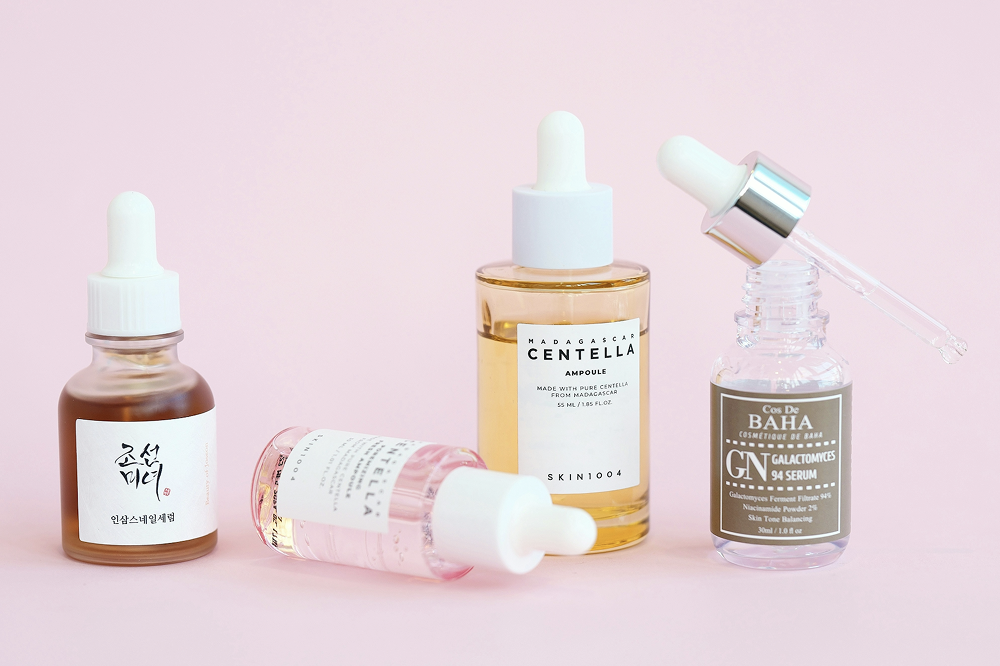K-beauty has become one of South Korea’s most successful global exports, crossing $10.3 billion in international sales last year and reshaping the global beauty landscape with ingredient innovation and high consumer trust. However, rapid category expansion has also created an increasingly dangerous vulnerability. K-beauty now sits at the intersection of intense consumer demand, fragmented global distribution, and uneven platform enforcement.
This is precisely the environment in which counterfeit ecosystems thrive.
During a recent interview with the BBC (full article linked here), MarqVision CEO Mark Lee highlighted how dramatically this risk profile has evolved.
“For a major Korean beauty brand, which I cannot disclose, we recently conducted 29 test purchases across major U.S. marketplaces. Twenty-six of them were fake -- a 90% counterfeit rate.”
— Mark Lee, CEO, MarqVision
This just adds to the growing evidence of a systemic breakdown in authenticity safeguards across digital commerce. Counterfeiting is here to stay and brands who ignore it will fall behind.
A Black Friday Case Study: 16,000+ Fake K-Beauty Listings Removed in One Weekend
On Black Friday weekend alone last year, MarqVision removed over 16,000 fake K-beauty listings from U.S. marketplaces. That volume is educational for brand and legal teams because it reveals several operational truths:
- Peak season strain is visible in enforcement data.
Counterfeiters intentionally exploit the period when marketplace review teams and automated systems are operating at maximum load. - Counterfeit supply chains are not reactive: they’re pre-stocked.
These listings don’t appear overnight. They reflect months of upstream manufacturing and distribution planning. - The marketplace visibility problem is accelerating.
When surges exceed platform capacity, illicit sellers gain uninterrupted exposure for days at a time.
Why K-Beauty Is Uniquely Vulnerable
From the legal and operational perspective, several structural factors converge to create an unusually high-risk environment for K-Beauty in particular:
1. Long and Complex Cross-Border Distribution
Most K-beauty brands ship from Korea into a diffuse network of distributors, retailers, and resellers. This supply chain complexity increases opportunities for diversion and makes custody verification difficult.
2. Ambiguity Around the Term “K-Beauty”
Unlike protected designations (e.g., Champagne, Parmigiano-Reggiano), “K-beauty” is not legally defined.
This allows:
- Non-Korean companies to label products as “K-beauty”
- Marketplace sellers to use K-beauty keywords without misrepresentation claims
- Counterfeiters to mimic branding conventions without crossing clear legal thresholds
For legal teams, this creates a trademark-adjacent gray zone where enforcement becomes harder.
3. Heavy Reliance on Online Marketplaces
K-beauty’s global expansion was driven by digital discovery and influencer marketing, which means:
- Discovery environments are now the same environments exploited by fakes
- Consumers rely on algorithmic ranking, not authorized reseller checks
- Marketplace vetting varies widely between platforms
In other words, the category’s biggest growth engine is now its biggest liability.
The Stakes Are Higher Than Revenue Loss
For legal and brand protection professionals, counterfeit K-beauty represents multidimensional risk:
1. Regulatory Exposure
Counterfeit skincare often contains unverified or unsafe ingredients. When these products cause irritation or injury, consumer complaints frequently blame the legitimate brand.
2. Dilution of Trademark and Trade Dress
Consistent presence of fakes in the market accelerates dilution. Even if the trademark is strong, persistent counterfeit circulation can weaken enforcement claims over time.
3. Loss of Channel Control
High counterfeit prevalence discourages authorized retailers and international partners, who fear returns, reputational risk, or customer dissatisfaction.
4. Long-Term Consumer Trust Erosion
Once consumers cannot reliably distinguish real from fake, repeat purchase intent declines, even for loyal customers.
Where the Industry Must Go From Here
To protect both consumers and category integrity, K-beauty brands and legal teams need to re-establish authenticity as a competitive advantage. That requires three strategic shifts:
1. Modern Trademark Enforcement
Brands must treat trademarks and trade dress as dynamic digital assets that require real-time protection, not static filings. AI-powered detection is no longer optional -- the volume is just too high for manual review.
2. Platform-Aligned Enforcement
Success increasingly depends on mapping enforcement strategy to each marketplace’s internal processes:
- How each platform prioritizes reporting queues
- How Buy Box resets occur
- How seller suspensions propagate across sister platforms
Legal teams will benefit enormously from aligning enforcement timelines with platform behavior.
3. Industry-Wide Clarity on “Authenticity”
As more non-Korean brands launch “K-beauty inspired” lines, trademarks alone cannot preserve category identity. Brands must build:
- Clear authorized seller lists
- Transparent cross-border distribution standards
- Public-facing authenticity education
The most successful brands in 2025 and beyond will be those that treat authenticity as a brand system, not just a legal defense.
If the Hallyu Wave has shown us anything, it’s that creativity, cultural export, and authenticity move together. K-beauty became a global phenomenon because consumers trusted its formulas, its origins, and its standards.
Protecting that trust is now the industry’s defining challenge.
The brands that act now to strengthen enforcement, tighten channel integrity, and educate consumers will shape the future of what “K-beauty” means worldwide.
To see how MarqVision helps leading beauty brands detect, remove, and prevent counterfeit activity in real time, request a demo with our team.
4 Enforcements a Week to 400: Scale Brand Safety with Marq AI

Don’t Just Find Counterfeits. Dismantle the Entire Network.

.png)
Discover the latest trends and challenges in IP protection

Take Control of Your Trademarks with MARQ Folio

Renew and Manage Your Trademarks Easily With MARQ Folio

We’re waiting to hear from you

See the best brand protection solution in action

Don’t let piracy steal your growth

Talk to us about your brand protection problems

Put an end to impersonating websites
Subscribe to our newsletter
Stay up to date on the latest IP Protection content from MarqVision.









